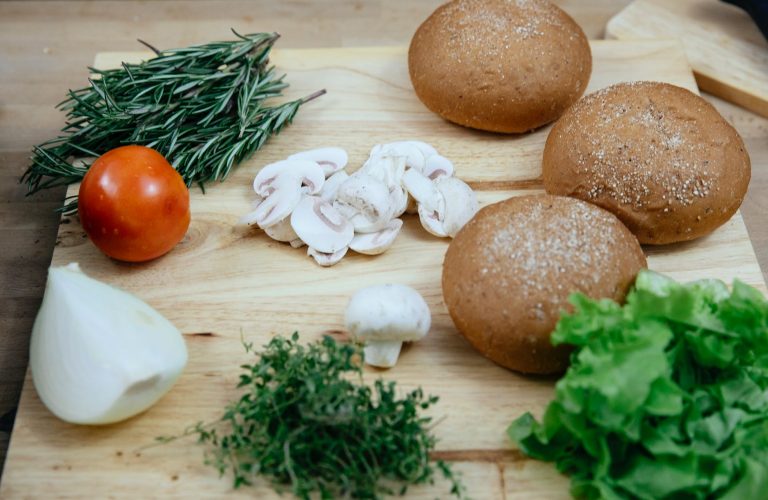Lussekatter (St. Lucia Buns)
Ingredients
- 1/4 teaspoon saffron threads
- 8 ounces 1 cup milk
- 1 tablespoon yeast
- 1/2 cup sugar
- 4 ounces 1 stick butter
- 5 cups all-purpose flour
- 1 teaspoon salt
- 1/2 cup sugar
- 2 large eggs beaten
- 1 beaten egg white for egg wash
Instructions
- METHOD
- Using a mortar and pestle, pound saffron threads to break down strands.
- In a small saucepan, heat milk to lukewarm.
- Mix yeast with 1/4 cup milk and 1 tablespoon sugar. Set aside.
- On low heat, melt butter in saucepan with milk. Add crushed saffron. Let cool.
- In large bowl, mix together flour salt and remaining sugar.
- Stir yeast into cooled milk mixture. Mix into dry ingredients, beating to mix well. Add beaten eggs. Knead in bowl for 5 – 7 minutes. Turn onto floured board and knead another 7 – 8 minutes.
- Put dough in lightly greased bowl, turn to coat all sides, cover and put in warm, draft-free place to rise for about 1 hour.
- When dough has risen, knead lightly to push out air and divide into small pieces (about 10 – 12). Using the hands, roll each small piece into a strip about 8 – 10 inches long. Shape each strip into an ‘S’ or a figure 8. Place on lightly buttered cookie sheets.
- Cover with clean cloth and let rise again until double in bulk, about 1 to 1 1/2 hours.
- Preheat oven to 375°F.
- When dough has risen, brush lightly with egg white. Bake in preheated 375° F oven for 15 minutes, or until lightly browned. Let cool on wire rack.
Notes
Lussekatter, also known as St. Lucia buns, are a traditional Swedish treat that is often associated with the holiday season. These saffron buns are a staple of the Swedish Christmas celebration, and they are typically served on December 13th, which is St. Lucia Day. In this article, we will explore the history of Lussekatter and how they became a beloved Swedish tradition.
The Origins of Lussekatter
The history of Lussekatter can be traced back to the ancient Roman Empire. Saffron, which is the main ingredient in Lussekatter, was brought to Sweden by the Vikings during their travels to the Mediterranean. Saffron was a rare and expensive spice that was often used in religious ceremonies, so it quickly became associated with special occasions and celebrations.
The name Lussekatter comes from the Swedish word “lusse”, which is a nickname for St. Lucia. St. Lucia was a Christian martyr who lived in the 4th century, and she is often associated with light and warmth. In Sweden, St. Lucia is celebrated as a symbol of hope and light during the dark winter months.
St. Lucia Day in Sweden
St. Lucia Day is one of the most important holidays in Sweden, and it is celebrated with parades, candlelight processions, and traditional foods like Lussekatter. The holiday is named after St. Lucia, who is said to have brought light and hope to the people of Sweden during a time of darkness and despair.
In Sweden, St. Lucia is celebrated on December 13th, which is the darkest day of the year. On this day, young girls dress up in white robes and wreaths of candles on their heads and parade through the streets, singing traditional songs. The boys often accompany them dressed in star costumes, and they carry wands with stars on the end.
The History of Lussekatter
Lussekatter were first mentioned in Swedish literature in the 18th century, but they likely date back much further than that. The earliest known recipe for Lussekatter was published in a cookbook in 1755, and it described a simple recipe for saffron buns that were flavored with almonds and raisins.
Over time, the recipe for Lussekatter has evolved, and today there are many different variations of the recipe. Some recipes call for cardamom or other spices, while others include a variety of fillings like marzipan, chocolate, or lingonberries.
Lussekatter Today
Today, Lussekatter are a beloved tradition in Sweden, and they are often served with a cup of hot mulled wine or glögg. They are typically enjoyed during the holiday season, but they are also popular year-round and are often served as a breakfast treat.
In recent years, Lussekatter have become popular around the world, and they can now be found in bakeries and cafes in many different countries. In the United States, they are sometimes called “St. Lucia buns” or “saffron buns,” and they are often served as a festive holiday treat.
Conclusion
Lussekatter are a delicious and beloved Swedish tradition that has been enjoyed for centuries. These saffron buns are an important part of the St. Lucia Day celebration in Sweden, and they are a symbol of hope and light during the dark winter months. Whether you are in Sweden or elsewhere in the world, Lussekatter are a delicious and festive treat that is sure to bring a little bit of Swedish tradition to your holiday season.



